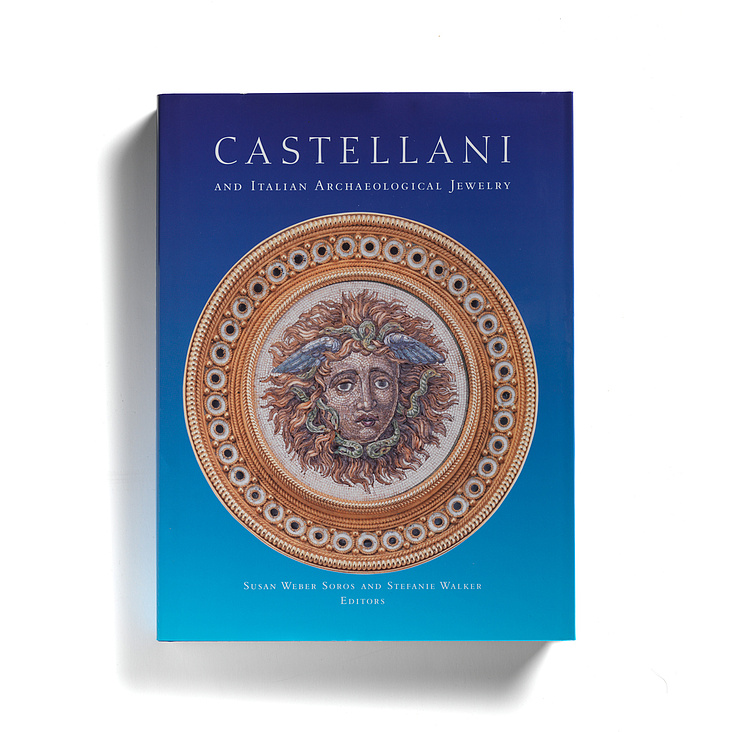The Bard Graduate Center presented the first major exhibition of jewelry created by Georg Jensen, the internationally renowned Danish firm founded in 1904, one of the greatest design companies of the 20th century, still in operation today. It focused particularly on founding designer/silversmith Georg Jensen (1866-1935).
Composed of more than 300 examples of jewelry, hollowware, drawings, period photographs, and archival material, the exhibition not only provided an in-depth look at the company’s history and production, but also analyzed the stylistic influences on Georg Jensen himself and the various pioneering designers who succeeded him in the mid-20th century. Loans from public and private collections in the United States, Scandinavia, and elsewhere in Europe included objects never before exhibited and highlighted the results of new research in the Georg Jensen Ltd. archives. Thus the exhibition offered a rare and in-depth opportunity to examine the work of the Jensen firm.
Georg Jensen founded his eponymous silversmithy in Copenhagen in 1904. Though he finished his apprenticeship with the goldsmith A. R. Andersen at the age of 18, his true ambition was to be a sculptor. He soon fashioned a plaster bust of his father that gained him admission into the Royal Danish Academy of Art in 1887. Despite critical success at international exhibitions, his career as a sculptor did not prove to be financially viable. His next venture, a small art-pottery workshop with his friend Joachim Petersen, also failed to make a profit. Their atypical creations, featuring fantastical figures and unusual glazes, received mixed critical reception.
Jensen returned to metalwork in 1901, taking a job as a foreman for the painter-turned-goldsmith Mogens Ballin. His two years at Ballin’s firm undoubtedly influenced his design sensibility, and when he opened his own workshop in 1904, the stylistic similarities between Jensen’s and Ballin’s jewelry were striking. Success came quickly for Jensen, who had a natural aptitude for fashioning silver and soon developed his hallmark sculptural style. His thoroughly fresh and modern jewelry established his reputation as one of the foremost Danish designers of his time. Hollowware and flatware production followed in the wake of his critical and financial triumph. International museums, such as the Danish Museum for Decorative Art and Folkwang Museum in Germany, quickly recognized the exceptional quality of the design and craftsmanship of his work and promptly purchased Jensen pieces for their collections.
In 1909 a retail shop opened in Berlin, and the following year, Jensen received a gold medal for the work he displayed at the International Exhibition in Brussels. In 1912, a larger workshop and a larger retail shop opened in Copenhagen. Jensen silver was exhibited for the first time in the United States in 1915 at the Panama-Pacific International Exposition in San Francisco, receiving much critical acclaim. In 1921 a retail shop debuted in London, and in 1924, another in New York City. International awards continued with the grand prix at international exhibitions in Paris (1925), Barcelona (1929), and Brussels (1935).
Reflecting on his career at the age of 60, Jensen said in 1926, “I felt that in silver I could unite my skills as a sculptor and a smith.” Even at the height of his success as a silversmith, he never ceased to identify himself as a sculptor, a title he displayed prominently on his company letterhead. Indeed, his sensibility as a sculptor informed his work as a smith and set him apart from his contemporaries. His dual identity as craftsman and artist largely contributed to his phenomenal success and found its greatest harmony in his works in silver.
Retrospective in nature, the exhibition was organized both chronologically and thematically. It began with Jensen’s work as a sculptor and ceramist, examining his artistic development as a young man, and continued with his earliest jewelry, such as a rare belt buckle depicting Adam and Eve made in 1899. It also included his jewelry from the workshop of Mogens Ballin.
The next section contained an extensive selection of jewelry that showcased the continuity and change of the firm’s designs during Jensen’s lifetime. It examined the range of organic and figurative subjects and identified predominant decorative motifs. These patterns revealed the “grammar” of Jensen’s design vocabulary and showed how he combined motifs in different ways—allowing them to “migrate” from piece to piece—in order to create new designs efficiently.
The display also illuminated the influence and progression of national and international artistic styles, beginning with skønvirke, a turn-of-the-century style that emerged from the Danish Arts and Crafts Movement. Little attention has been paid to this noteworthy aspect of Jensen jewelry. Superb examples of skønvirke jewelry made by Jensen’s contemporaries from the Danish Museum of Decorative Art in Copenhagen placed Jensen’s own stylistic development in a cultural and historical context. Furthermore, they revealed how Georg Jensen surpassed his peers and kept his skønvirke pieces on the market and in the public eye long after the style had been supplanted. The international influence of the abstract, organic forms of art nouveau, and Jugendstil were also evident in the evolution of Jensen jewelry, as shown through comparative pieces.
The years after World War II witnessed a new triumph for the Jensen firm. Designers such as Henning Koppel, Vivianna Torun Bülow-Hübe, Nanna Ditzel, Astrid Fog, Bent Gabrielsen, and Arno Malinowski brought the company back to the forefront of the international design scene. They pushed the firm in new directions and created the Jensen company’s own interpretation of Scandinavian Modern. These successors to the Jensen mantle, while creating distinct, individual styles, maintained the founder’s spirit and love of the material, evident in his often-quoted meditation: “Silver captures the moonlight’s glimmer—like the light of a Danish summer night. It can darken, and it can, when it dews, become like a will o’ the wisp.”
Continuing the Bard Graduate Center’s longstanding commitment to Scandinavian design scholarship, Georg Jensen Jewelry expanded upon exhibitions including Finnish Modern Design (1998), Utopia and Reality: Modernity in Sweden, 1900–1960 (2002), and Marimekko: Fabrics, Fashion, Architecture (2003).
The curator of the exhibition was Dr. David A. Taylor, an expert on material culture at the Library of Congress in Washington, D.C. He is the author of Georg Jensen Hollowware: The Silver Fund Collection (2003) and other scholarly books and articles on design and craftsmanship.
An illustrated catalogue, Georg Jensen Jewelry , the first scholarly book devoted to the subject, edited by Dr. David A. Taylor, features essays by a number of prominent international scholars including Dr. Taylor, Toni Wolf Greenbaum, Mirjam Gelfer-Jørgensen, and Isabelle Anscombe. The catalogue was published by the Bard Graduate Center in collaboration with Yale University Press. It includes previously unpublished color photography of jewelry from public and private collections in Denmark, western Europe, and the United States.










.jpg,732x732,c)














